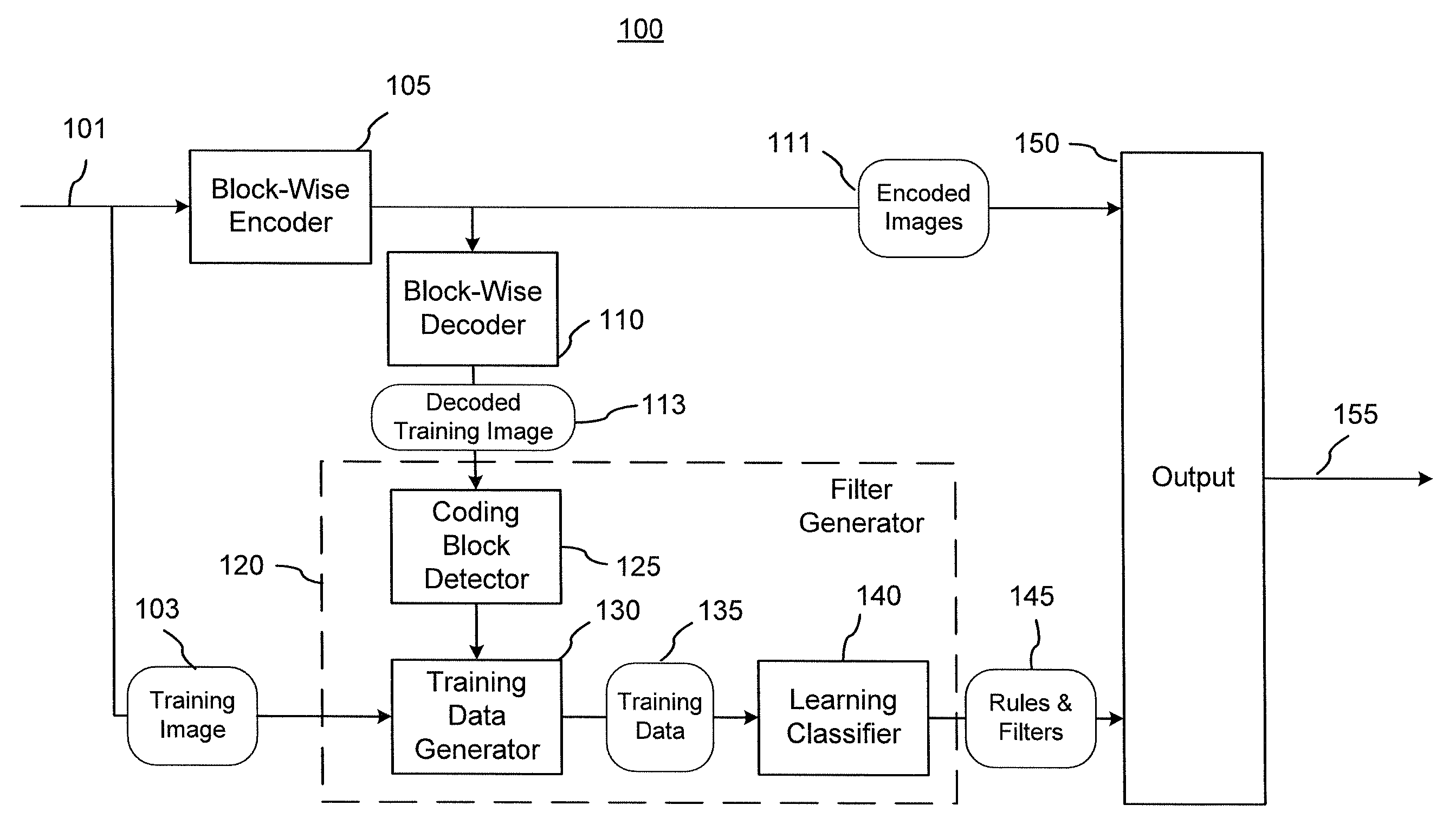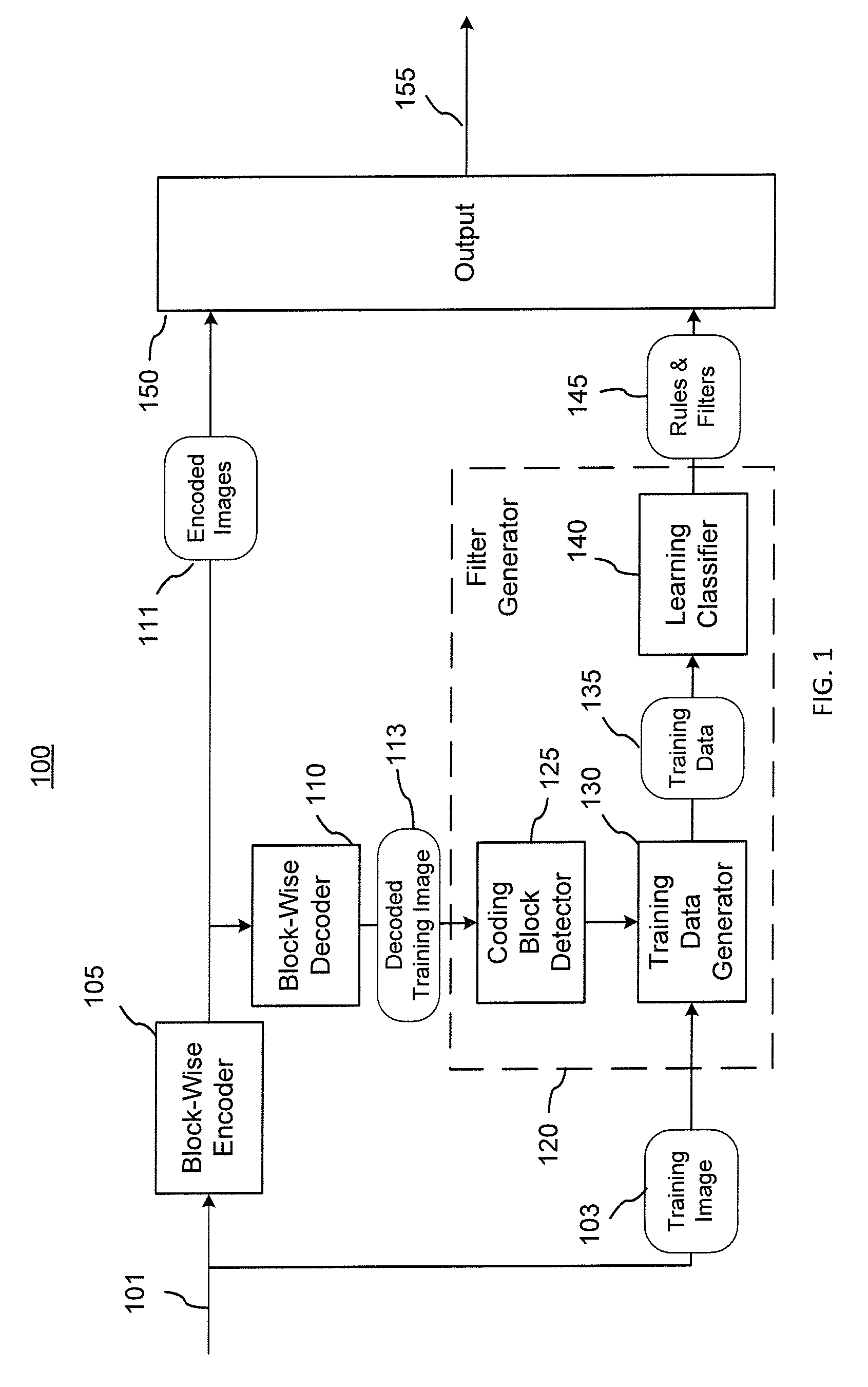Learning filters for enhancing the quality of block coded still and video images
a learning filter and block-coded technology, applied in the field of learning filters, can solve the problems of blocking artifacts at the boundary, negligible impact on picture quality, and significant complexity reduction, and achieve the effect of reducing blocking artifacts
- Summary
- Abstract
- Description
- Claims
- Application Information
AI Technical Summary
Benefits of technology
Problems solved by technology
Method used
Image
Examples
Embodiment Construction
[0031]In the following the terms “image” and “picture” are used interchangeably, and may refer to a still pixilated image such as a digital photograph or to a frame of a video signal. The term “original image” or “original picture” refer to a pixilated image at an input of a block-wise encoder. The term “original image data” refers to any digital image data at the input of a block-wise encoder comprising pixel values of one or more digital images.
[0032]The invention will be described in connection with a number of exemplary embodiments. To facilitate an understanding of the invention, many aspects of the invention are described in terms of sequences of actions to be performed by functional elements of an image processor. It will be recognized that in each of the embodiments, the various actions including those depicted as blocks in flow-chart illustrations and block schemes could be performed by specialized circuits, for example discrete logic gates interconnected to perform a speci...
PUM
 Login to View More
Login to View More Abstract
Description
Claims
Application Information
 Login to View More
Login to View More - R&D
- Intellectual Property
- Life Sciences
- Materials
- Tech Scout
- Unparalleled Data Quality
- Higher Quality Content
- 60% Fewer Hallucinations
Browse by: Latest US Patents, China's latest patents, Technical Efficacy Thesaurus, Application Domain, Technology Topic, Popular Technical Reports.
© 2025 PatSnap. All rights reserved.Legal|Privacy policy|Modern Slavery Act Transparency Statement|Sitemap|About US| Contact US: help@patsnap.com



